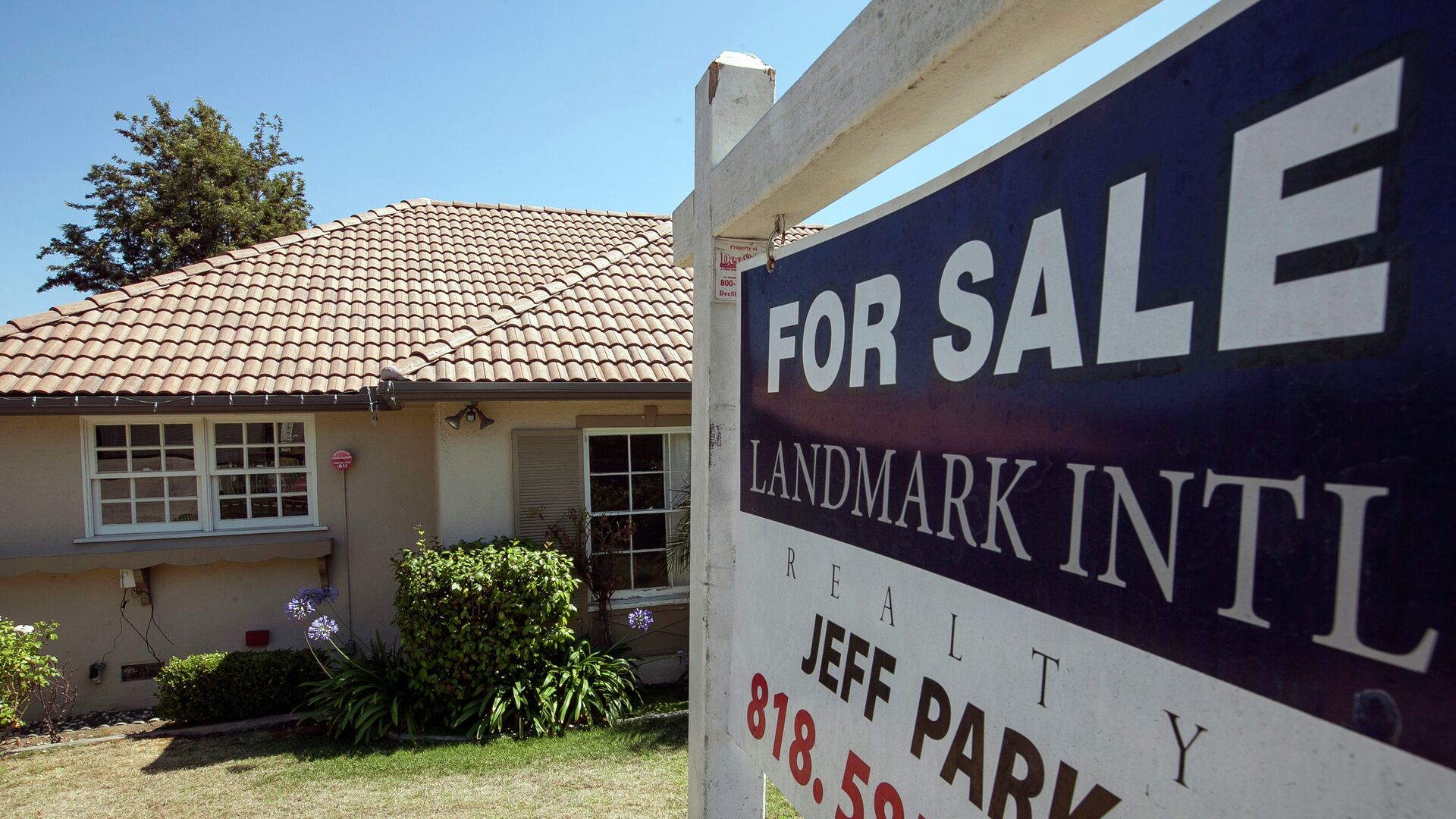https://sputnikglobe.com/20230203/survey-40-of-millennials-have-at-least-one-of-their-monthly-bills-paid-for-by-their-parents-1106937962.html
Survey: 40% of Millennials Have at Least One of Their Monthly Bills Paid for by Their Parents
Survey: 40% of Millennials Have at Least One of Their Monthly Bills Paid for by Their Parents
Sputnik International
A new survey conducted by OnePoll on behalf of Chartway Credit Union found that American adults between the ages of 26 and 41 are receiving some form of help from their parents.
2023-02-03T03:50+0000
2023-02-03T03:50+0000
2023-02-03T03:43+0000
economy
economy
millennials
millennials
us economy
housing
housing crisis
housing bubble
https://cdn1.img.sputnikglobe.com/img/101851/21/1018512140_0:0:3000:1688_1920x0_80_0_0_d94b36e85e1111b803a8a2412120eafa.jpg
A new survey conducted by OnePoll on behalf of Chartway Credit Union found that American adults between the ages of 26 and 41 are receiving some form of help from their parents. The poll surveyed 2,000 Americans and found that 72% of respondents plan to take on those financial responsibilities within the next two years, but others say they will continue receiving help unless told otherwise.Another 31% say they are receiving help from their parents so they can save money.About 22% of millennials receive help with their groceries, while 19% receive help with utility bills, 18% with auto insurance, 16% with car payments, and 12% have their parents pay for their streaming services.These overwhelming statistics are even more discouraging when compared to the 74% of American adults who view homeownership as the first indication of achieving the “American Dream,” and 65% of those are millennials.But even though a majority of Gen Zers and millennials want to buy houses, they can’t. Their biggest reason? Affordability. At least 2/3 of polled adults said their biggest reason for not buying a home was cost. In 1980, the average home cost $47,200. For 2021, the average home sold for $301,000.A year later, in 2022, the cost of a new home jumped to $344,400. The housing market has skyrocketed over the last two years thanks to a high demand for homes (up about 34%) since the start of the pandemic.In 2022, 19% of men and 12% of women between the ages of 25 and 34 lived with their parents. Soaring home prices and the COVID-19 pandemic played a major role in the financial power of millennials. Inflation, student debt and repressed wages following the Great Recession are also preventing this group from being able to be fully independent with their finances. Almost 70% of millennials said they would be willing to relocate to a different state, move to a more affordable (but less desirable area) or take on a “fixer-upper” in order to achieve their independence.In 2022, the average age of home buyers shot up to 53, the highest on record according to National Association of Realtors (NAR) since 1981. For the first time in 2021 some millennials got a shot at becoming first-time home buyers with pandemic relief being used as help for a down payment. However, it didn't last long before the market shot up again. By mid-2022 the number of first-time home buyers dropped from 34% to 26%, which is the lowest level it has been in four decades. “Anybody who already owned a house did very well,” said Gray Kimbrough, an economist at American University, of the competitive housing market. “The problem is, if you go from renting to buying in a really expensive market, you don’t have the advantage of all the equity other people built up by happening to own a house in a market that got a lot more expensive.”
https://sputnikglobe.com/20220825/home-prices-finally-fall-for-the-first-time-in-3-years-1099966668.html
Sputnik International
feedback@sputniknews.com
+74956456601
MIA „Rosiya Segodnya“
2023
Mary Manley
https://cdn1.img.sputnikglobe.com/img/07e6/01/0b/1092187887_0:0:2048:2049_100x100_80_0_0_0c2cc4c84f89aff034cc55bb01fb6697.jpg
Mary Manley
https://cdn1.img.sputnikglobe.com/img/07e6/01/0b/1092187887_0:0:2048:2049_100x100_80_0_0_0c2cc4c84f89aff034cc55bb01fb6697.jpg
News
en_EN
Sputnik International
feedback@sputniknews.com
+74956456601
MIA „Rosiya Segodnya“
Sputnik International
feedback@sputniknews.com
+74956456601
MIA „Rosiya Segodnya“
Mary Manley
https://cdn1.img.sputnikglobe.com/img/07e6/01/0b/1092187887_0:0:2048:2049_100x100_80_0_0_0c2cc4c84f89aff034cc55bb01fb6697.jpg
survey, millenials, monthly bills, parents
survey, millenials, monthly bills, parents
Survey: 40% of Millennials Have at Least One of Their Monthly Bills Paid for by Their Parents
At least 2/5 of millennials say their parents are paying for one or more of their monthly bills. The most common of which is housing. At least 24% of millennials receive help from their parents for rent while 17% get help with their mortgage.
A new
survey conducted by OnePoll on behalf of Chartway Credit Union found that American adults between the ages of 26 and 41 are receiving some form of help from their parents.
The poll surveyed 2,000 Americans and found that 72% of respondents plan to take on those financial responsibilities within the next two years, but others say they will continue receiving help unless told otherwise.
Another 31% say they are receiving help from their parents so they can save money.
About 22% of millennials receive help with their groceries, while 19% receive help with utility bills, 18% with auto insurance, 16% with car payments, and 12% have their parents pay for their streaming services.
“It’s just really expensive to be a young person now,” said Kimberly Palmer, a personal finance expert. “The cost of housing, of food: across the board, everything is expensive, especially in big cities. It can be a huge asset to be able to turn to your parents.”
These overwhelming statistics are even more discouraging when compared to the
74% of American adults who view homeownership as the
first indication of achieving the “American Dream,” and 65% of those are millennials.
But even though a majority of Gen Zers and millennials want to buy houses, they can’t. Their biggest reason? Affordability. At least 2/3 of polled adults said their biggest reason for not buying a home was cost. In 1980, the average home cost $47,200. For 2021, the average home sold for $301,000.
A year later, in 2022, the cost of a new home jumped to $344,400. The housing market has skyrocketed over the last two years thanks to a high demand for homes (up about 34%) since the start of the pandemic.
In 2022, 19% of men and 12% of women between the ages of 25 and 34 lived with their parents. Soaring home prices and the COVID-19 pandemic played a major role in the financial power of millennials. Inflation, student debt and repressed wages following the Great Recession are also preventing this group from being able to be fully independent with their finances.

25 August 2022, 05:45 GMT
Almost 70% of millennials said they would be willing to relocate to a different state, move to a more affordable (but less desirable area) or take on a “fixer-upper” in order to achieve their independence.
In
2022, the average age of home buyers shot up to 53, the highest on record according to National Association of Realtors (NAR) since 1981. For the first time in 2021 some millennials got a shot at becoming first-time home buyers with pandemic relief being used as help for a down payment. However, it didn't last long before the market shot up again.
By mid-2022 the number of first-time home buyers dropped from 34% to 26%, which is the lowest level it has been in four decades.
“Anybody who already owned a house did very well,” said Gray Kimbrough, an economist at American University, of the competitive housing market. “The problem is, if you go from renting to buying in a really expensive market, you don’t have the advantage of all the equity other people built up by happening to own a house in a market that got a lot more expensive.”
“[For] people who aren’t able to find appropriate housing, it’s a lot harder to change a job, to get married, to have kids,” Kimbrough said. “And because we’ve made homeownership primarily for people in their 50s, 60s, 70s, 80s, it’s really hard for people who are earlier in their lives to move on to the next life stage.”






